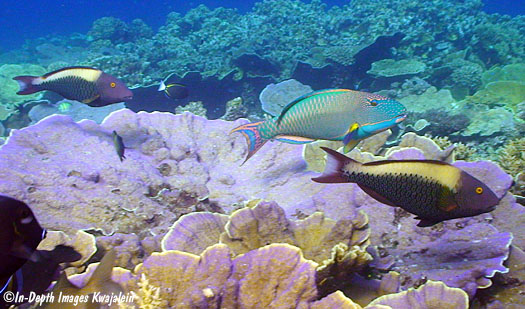
We have long called these the bicolor parrotfish, Cetoscarus bicolor, but that name was recently shown to apply to a different species from the Red Sea. Cetoscarus ocellatus comes in three very distinct color forms for juveniles, initial adult phase and terminal males. The colorful green terminal males usually are accompanied by several initial phase (probably females). The first photo shows one male with a couple of initial phase individuals swimming over some Montipora coral. This species is common at Kwajalein.

A few more males are shown below.
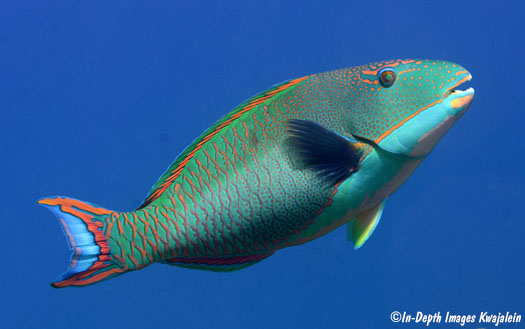
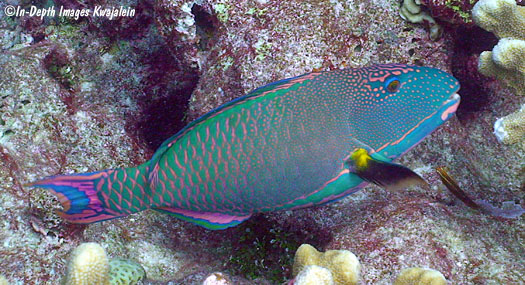
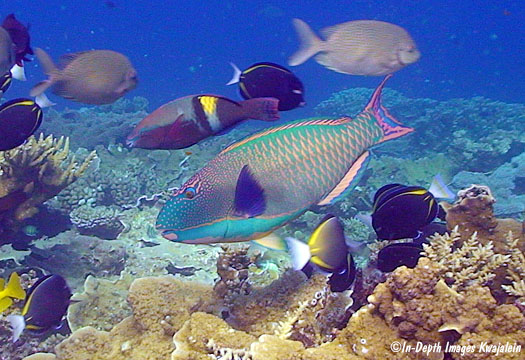
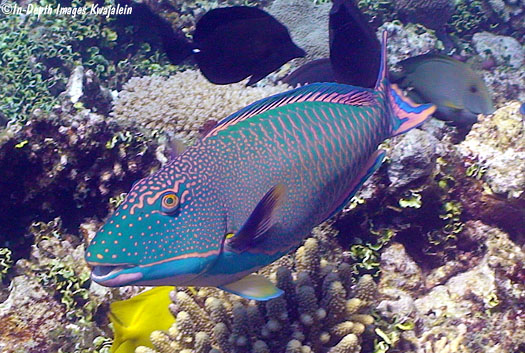
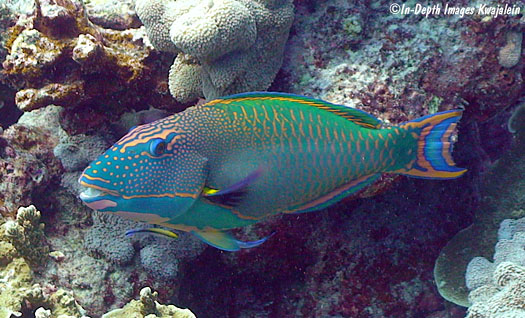
The one below was displaying at another male that invaded his territory.
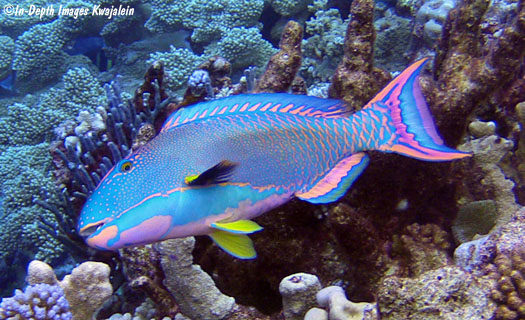
Asleep on the reef at night.
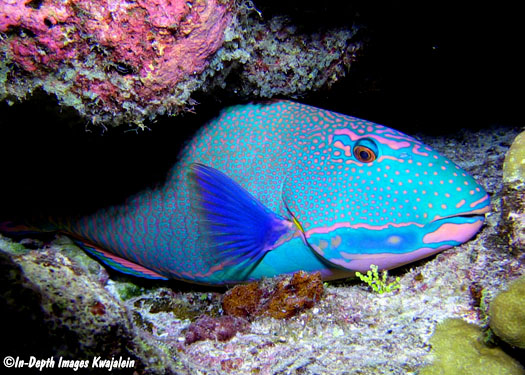
Some initial phase adults are below.
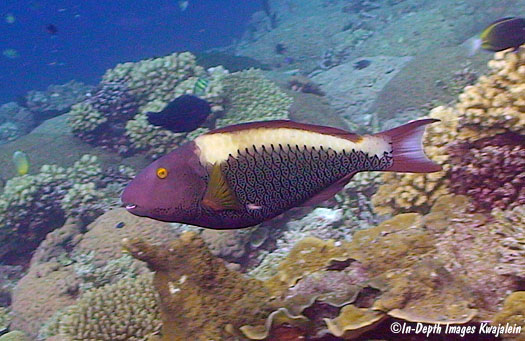
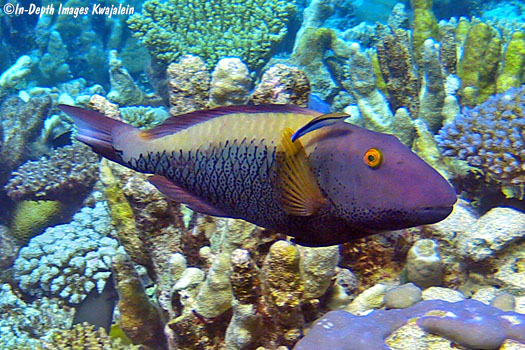
This one is sleeping in on a reef slope at night.
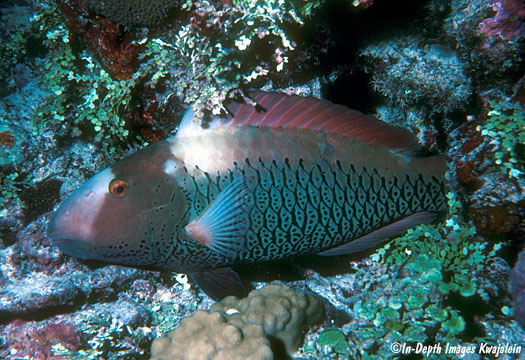
This one is a bit younger than a full sized initial phase individual.
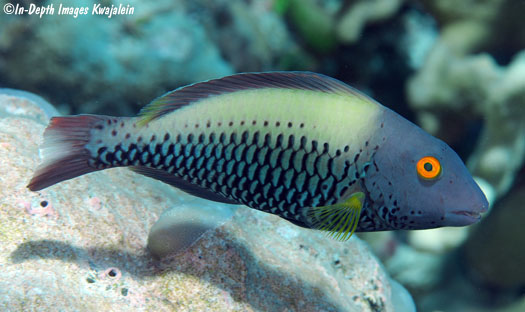
Even smaller, this one is changing from the juvenile colors into the initial phase coloration.
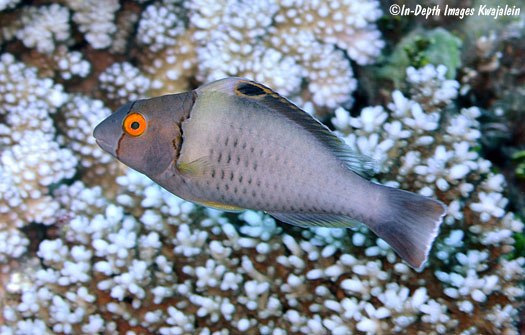
These small individuals show the juvenile coloration. The black spot surrounded by orange is the basis for the specific name "ocellatus." These are relatively commonly seen in seaward reef surge channels, where they live by themselves along the channel edges, often around clumps of Halimeda algae.
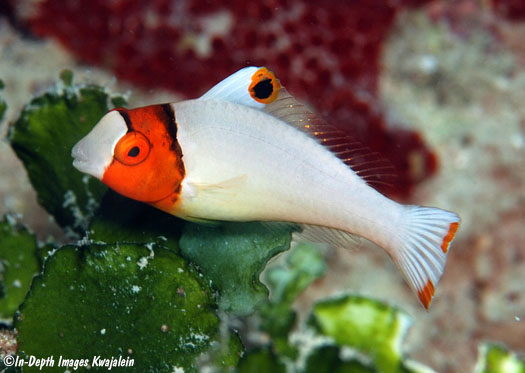
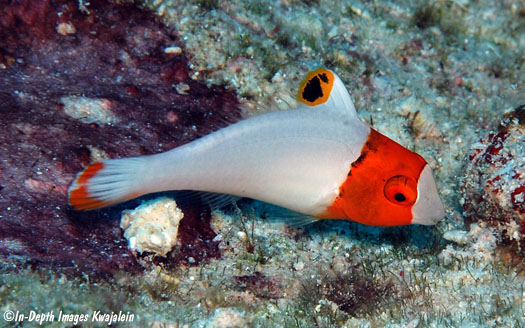
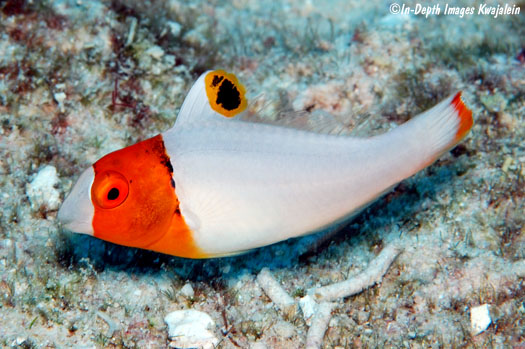
A very tiny one, only about 8mm long.
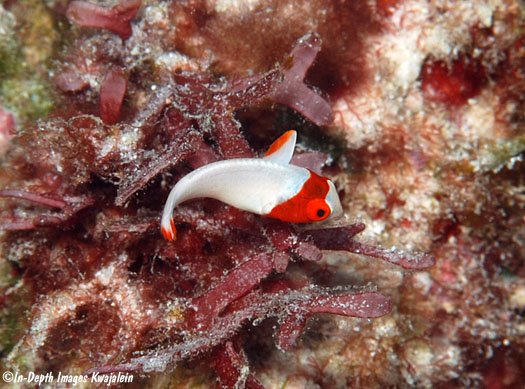
Juveniles may wrap themselves in a mucus bag at night when they sleep.
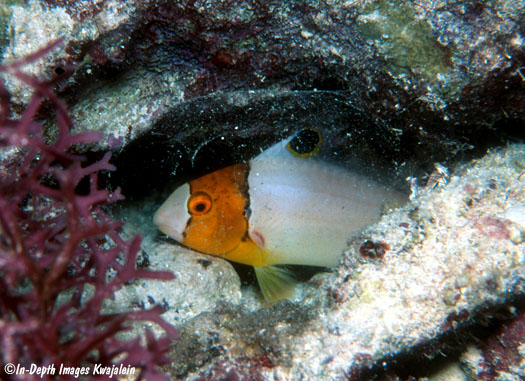
Created 8 March 2015
Updated 27 March 2017